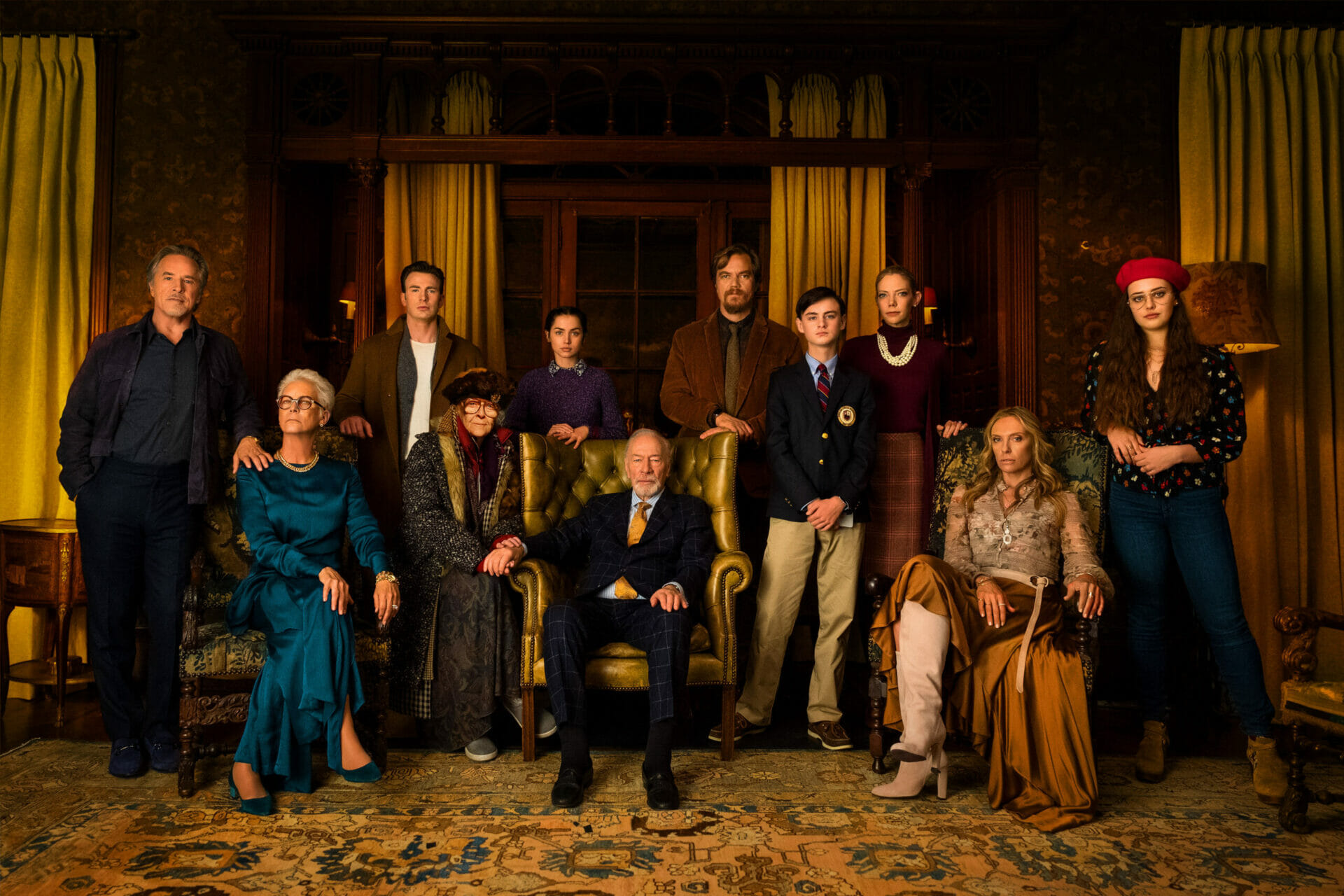
Maestro in Blue | Netflix’s First Greek Production
Creator
Director
Country
Seasons
Original language
Genre
By
Before March 17th of 2023, if you’d tried searching for a Greek production on Netflix, you would’ve been sorely disappointed. Though Netflix has always offered a good deal of media filmed on Greek islands with international casts, historical epics on the Roman Empire, and sweeping travel documentaries, there was a curious lack of productions in Greek, by Greeks.
Thanks to Christoforos Papakaliatis, all of that’s changing.
Maestro in Blue (known as Maestro in Greece), a nine-episode series blending crime, romance, and family drama, premiered on Mega Channel in October of 2022 before finding its historic home on Netflix, making it the first Greek series picked up by the streaming giant. Quickly, the show landed on the global top 10 most-watched series list and raked up a 94% audience rating on Rotten Tomatoes, turning all eyes, once again, to the birthplace of theater.
Spinning a Spider’s Web
We begin, as many murder mysteries do, with the sound of a shotgun. We see a body being dragged through the woods before it is unceremoniously dumped into the sea. Blue water, as far as the eye can see.
We almost forget about this moment as the first episode focuses on Klelia (Klelia Andriolatou), a rebellious young woman. She introduces us to the quaint and conservative island of Paxos where her family lives, just in time for a newcomer to shake things up. Meet Orestis, the keen-eyed and serious maestro (played by creator Christoforos Papakaliatis). He has, ostensibly, arrived to revitalize the island’s annual music festival following COVID-19 lockdowns. He’s in for a whole lot more.
Though Maestro in Blue dives into the realm of romance and family drama, at its core, the show is a murder mystery and cleverly unravels its central crime one 45-minute episode at a time. Like Rian Johnson’s Knives Out (2019), the show utilizes its large ensemble cast for both humor and dynamism. Eleven key characters are introduced and several narrate their own episode. It is the tense, ever-evolving relationships among the three central families, both between and across generations, that keep the audience invested.
Wisely, Papakaliatis refuses to play all his cards at once. Backstories, motives, and truths are variously revealed and kept secret throughout the storyline. To complement this approach, the final minutes of each episode build cumulatively on the murder, implicating more and more of the cast in the crime; not unlike Agatha Christie’s Murder on the Orient Express.
Exploring Rifts
It’s true that the interwoven storylines of Maestro in Blue can be confusing at first. Though there are many characters to keep track of, Papakaliatis keeps them distinct. Phenomenal performances around the board, but particularly from powerhouses Maria Kavoyianni and Haris Alexiou, also help to distinguish our chorus.
Besides complicated interpersonal relationships, the show also doesn’t shy away from exploring enduring issues like homophobia and domestic abuse; we watch children learn hatred from their parents, and practice it on themselves and others. In this way, the lingering specter of history is as much of a character as the maestro himself—both personal and cultural histories echo in each character’s narration, leading them down paths that we can clearly trace. Haris’ episode features flashbacks from the time of the junta, and Orestis’ from the time of austerity measures. The political is never totally removed from the personal.
Maestro in Blue emphasizes the tangible consequences of the rift between ideological conservatism and progressiveness, particularly as it divides a small community; the community of an island, a town, a family, a marriage, and even the self. In this way, Papakaliatis holds a critical mirror up to Greek—and, in fact, international—audiences. Through the vehicle of a murder mystery, we are invited to reflect on the skeletons in our own closets.
The Role of Music
Papakaliatis offers an artist’s approach to healing these divisions inside ourselves: music.
The characters who deliberately engage in music are also the most emotionally liberated. Charlambos, the show’s antagonist, outright rejects music because of the emotional reactions it provokes within him. It’s an almost comically extreme stance, reminiscent of the anti-dancing sentiment in Footloose (1984), but the message is clear: music is expression and expression can be healing. The highest sin characters can commit in Maestro in Blue is repression. In order to societally conform, nearly every character at some point represses their sexuality, desires, or sense of self, and suffers torment for their sacrifice.
Through musical performance, on the other hand, we see the emotional inner lives of characters. The first time we meet Antonis (Antonis Chalkias), he sings a fiery cover of Queen’s “I Want to Break Free” and each lyric feels keenly personal. Throughout the show, Antonis continues to communicate his frustration, passion, and despair through performance. Haris (celebrated Greek singer Haris Alexiou), too, provides the achingly beautiful anthem of the show, with Alexiou’s own “Prosefchi,” a ballad released in 1995. Even more so than the show’s score, these two stand-out musicians bring forth the beating heart of Maestro in Blue.
To be noted in a discussion of the show’s themes of repression versus expression is the main love story between the barely-legal Klelia and middle-aged Orestis. The choice to make Klelia nineteen years old, as opposed to closer to the actress’s actual age of twenty-six, has been criticized for how close it comes to condoning pedophilia under the guise of acceptance and free expression. It is important to continuously highlight this issue as Maestro in Blue heads towards its second season.

Ionian Blue
Though the structure and strong performances certainly contribute to the success of the series, it is the picturesque Cycladic landscapes that distinguish it among competitors in the mystery genre.
Sparkling water, bougainvillea draping over white houses, sun-soaked cliffsides; every episode of Maestro in Blue is filled to the brim with the kinds of scenery that people cross the world for. In fact, it’s the scenery that so many American, English, and other international productions have capitalized on in blockbusters for decades, dating all the way back to Zorba the Greek (1964), and followed by Shirley Valentine (1989), Mediterraneo (1991), Mamma Mia (2008), and more. Importantly for a platform like Netflix, the pen and camera are now held by Greek storytellers depicting their own landscapes and people.
Cinematographer Antonis Zkeris makes use of buttery light often, bathing his subjects in gold before submerging them in the dusk that never seems too far off. Many of the illicit dealings in the show take place in the dark, including the immediate aftermath of the murder; though not as picturesque, some of the most interesting compositions take place under the harsh fluorescent lights of boats bobbing on dark water. Zkeris isn’t afraid to throw in a Dutch angle, either, at times canting a shot mid-dialogue as a conversation turns dangerous. It’s bold choices like these that elevate the cinematography and let us know Maestro in Blue isn’t only relying on the natural beauty of its setting.
Opening Doors
As of now, Maestro in Blue is said to be filming its second and final season. The major success of Netflix’s first exclusive worldwide distribution deal for a Greek scripted television series is expected to open doors for future productions seeking global audiences, an exciting step for Greek creators and fans of their cinema.
Tag
Buy a ☕ for Hypercritic










